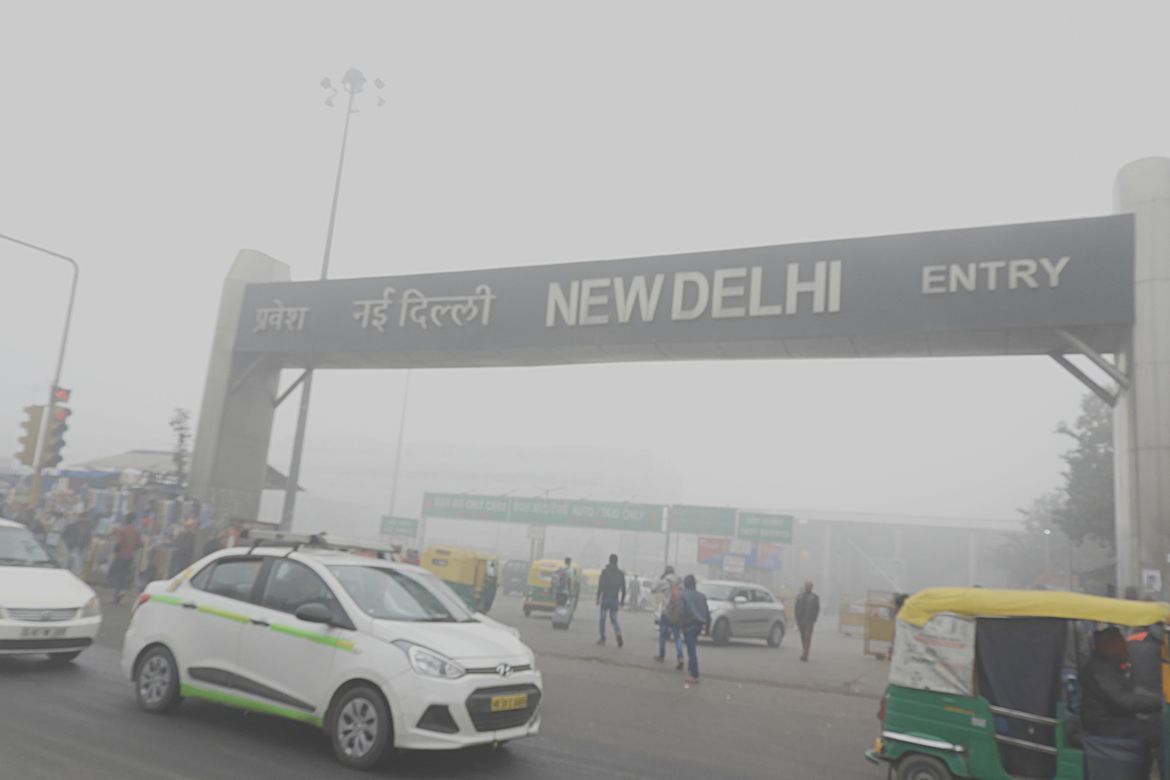
Sumita Roy Dutta / Creative Commons
Air pollution is pervasive in the Indian capital, and emissions from fuel-burning vehicles pose a serious threat to both healthy people and those with respiratory conditions.
New Delhi, one of the world's most polluted and densely populated cities, could significantly improve air quality for its 31 million residents by replacing fuel-burning ride-share vehicles with battery-powered electric cars, a new UCLA-led study shows. What's more, the researchers say, the transition would result in economic benefits in a relatively short period of time.
In India, where only about 3.5% of residents own personal cars, taxis and rapidly expanding app-based ride-sharing services like Uber and the India-based Ola have become major sources of tailpipe pollution, accounting for a large portion of the harmful particulates, nitric oxides and carbon monoxide emitted by vehicles each year.
The research, published in the journal Transportation Research Part D: Transport and Environment, presents a comprehensive framework for electrifying this ride-share fleet and shows that 23,000 electric vehicles and a network of 3,000 50-kilowatt charges would be enough to satisfy New Delhi's entire ride-share demand.
The upfront investment in vehicles and infrastructure would be recouped in less than two years, primarily due to savings on fuel expenditures, according to the researchers, who considered the full spectrum of costs for the transition, including the value of land for charging stations, government subsidies for the purchase of electric vehicles and the price of fuel per kilometer.
While most efforts aimed at reducing air pollution through the use of electric vehicles have focused on private household-use cars, electrifying ride-sharing services is a far more cost-effective approach, the researchers said, because these vehicles see three to four times as much use as the average privately owned Indian vehicle.
"The savings come much quicker because they are driving a lot and burning a lot of fuel," said lead author Deepak Rajagopal, an assistant professor at the UCLA Institute of the Environment and Sustainability.
The researchers analyzed data from two years of ride-share trips in New Delhi — including pickups, drop-offs and wait times — spanning 15 million kilometers of travel. The data came from Uber and Ola, which together account for roughly half of all ride-share service in the city.
Electrifying the city's entire ride-share fleet, they found, would cut some 180 metric tons of tailpipe nitric oxide emissions and 0.14 metric tons of particulate emissions annually. In a city in which air pollution is pervasive and the air quality index can sometimes climb above 400 (out of a maximum of 500), posing a danger to even healthy people, these two pollutants are among the biggest threats, causing and worsening respiratory infections and asthma.
In addition to alleviating a substantial amount of the city's pollution, which also includes sources such as industrial construction and households burning fuels for heating, the switch would significantly lower the greenhouse gas intensity of transportation, notwithstanding the high share of coal in New Delhi's electricity mix.
Importantly, the introduction of a mandate requiring ride-sharing services to transition to zero-emission vehicles now has strong precedent, Rajagopal said, with California, New York and London all having mandated similar changeovers.
Rajagopal stressed that the framework for ride-share electrification developed by the researchers is flexible enough to apply beyond New Delhi and could be used by public planners and fleet operators in other urban areas.
"Zero-emission targets for commercial vehicle fleets are not only realistic but economically and environmentally sound for polluted cities worldwide," he said. "These findings can help others considering such a transition thoroughly understand the infrastructure needs, the private and public costs and benefits, and the improvement to air quality that comes with electrification."






